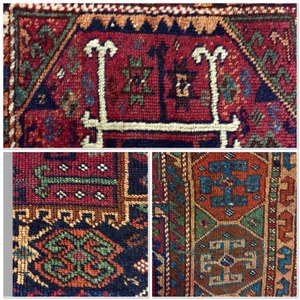The ram has always been the symbol of the Persian Empire (Achaemenid Dynasty that started in the 6th century BC during the age of Aries) and the kings and army often wore helmets with ram’s horns on. It was not only the Persians who revered this symbolism. The Hebrews’ story happens during the Age of Aries and in the Torah there are many references to the ram. Starting with Abraham receiving a ram as offering in place of his son Isaac, show the transition from the Taurian practices (the age of Taurus preceded Aries) of human sacrifice to animal sacrifices in the age of Aries. Moses rising as leader of the Hebrews and leading them to freedom also occur during the age of Aries. It starts with the Hebrews being instructed by Moses to sacrifice lambs and to smear it’s blood on the door posts ensuring that each household is spared the death of the first born son plague. Later in the desert when Moses returns with the Ten Commandments, he was enraged to see that his people built a golden calf during his absence (returning to the old Taurian religion they learnt and followed in Egypt) instead of following the new path that Moses set out for them. So enraged was Moses that he kept the Hebrews in the desert until the entire “golden calf” generations died out before leading the remainder to the Promised Land. He himself never entered either but he ensured that Judaism as the new faith of the Hebrews would be practised from then on. The image of Moses is often depicted with ram's horns attached to his head. Even to this day, as part of the practices of the Jewish New Year, Rosh Hashanah, the shofar (an ancient musical horn typically made of a ram's horn) is blown in synagogue services on Rosh Hashanah and at the very end of Yom Kippur, and is also blown every weekday morning in the month of Elul running up to Rosh Hashanah. The altar used for sacrifices in the temple of Jerusalem had a ram’s horn on each of the four sides.
Aries was also the age of Law. The first set of comprehensive laws was written by Hammurabi, the 18th century BC Babylonian king. Known as the Hammurabi code it was the first set of laws that dealt with prosecuting the offender as well compensation for the victims, as oppose to the Taurian laws that mostly dealt with victim compensation. Four centuries later the Ten Commandments were given to Moses who became the Hebrew Lawgiver and eight centuries on, Cyrus the Great of Persia wrote the first Human Rights charter.
Besides the great influences the age of Aries brought to humanity, for the many tribes in Iran and elsewhere their flock of sheep is their wealth. Without them producing carpets, blankets, tents, clothing, milk, cheese and meat would be impossible. Hence providing the best care for their animals is one of the main daily concerns of these tribes. Using the symbol of the ram's horn in their art is a show of the importance of these animals in their lives and their wish for the carpet buyer to experience fertility and great wealth.



